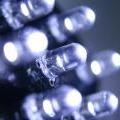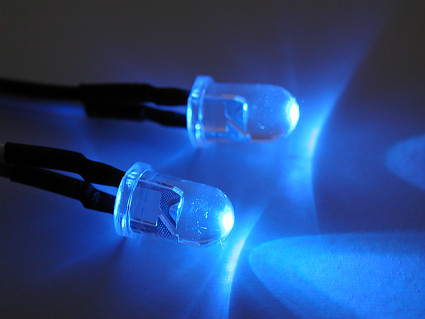LED technology
LED technology is a durable, adaptable and ecological lighting system with very low consumption. In 1990 the first blue LEDs were manufactured. Production of white light LEDs began soon after. With this relatively recent advance, the LED system emerged as the highest profile light source with the best prospects.
All large lighting system manufacturers are now committed to this technology, which will be the principal light source of the future..

Advantages of LED technology
The advantages of LED technology can be summed up as follows:
• Saving of 60% to 90% in electricity consumption over conventional lighting.
• Cold light: the light emitted doesn’t heat offices or other rooms, so it indirectly helps to reduce the amount of energy consumed by air conditioning units.
• LED lights don’t require either ballast or starters, which also consume energy and normally wear out. Using LED technology allows savings to be made on replacements and labour.
• Traditional fluorescent lights flicker constantly, negatively affecting staff and leading to sick leave. LED lights turn on instantly, without flickering.
• The gas in fluorescent lights contains mercury, an environmentally harmful substance, and lights must be removed by an authorised dealer. LED lamps and tubes are mercury-free.
• Normal fluorescent lights that aren’t protected by airtight housing end up with a layer of dust on the top, which reduces lumens (less light). Something similar happens when the reflectors on the light cover are in a poor state of repair. Fluorescent LEDs don’t need reflectors on their covers and emit light at an angle of only 180 degrees, which means 100% of the light emitted is used.
• LED lamps have a lifetime of 30,000 to 50,000 hours.
• From its first year in use, a normal fluorescent light experiences a considerable decrease in lumens due to deterioration of the light. In subsequent years, if the light’s still working, the loss of lumens is even greater. LEDs undergo no significant loss of lumens for at least 10 years.
• LEDs adapt easily to connections already on the market, which means you don’t need to change accessories, lamp fittings or covers in most cases.
• LEDs are more impact resistant than traditional lamps and fluorescent tubes, and are less likely to be damaged during installation.
• Roschi Technology provides a two-year guarantee on its LED lamps, with free replacement on site.
• Our range of LED products enables us to work in a large variety of applications (indoor, outdoor, industrial lighting, gardens, street lighting) with a wide choice of colour and power.
• With all these advantages, LEDs not only allow enormous savings to be made on electrical energy and labour and time to replace worn out lamps. They also reduce emissions of CO2 into the atmosphere, avoid the contamination that can occur with the mercury in fluorescent lamps and conventional energy-saving lamps, and improve the workplace environment. LED lights are, without a doubt, the future of all lighting.

What is an LED?
LEDs are solid state semiconductor devices (making them tough, reliable, long-lasting and vibration-proof) that can convert electrical energy directly into light. The inside of an LED is a small semiconductor encapsulated in an epoxy resin housing. In comparison with other systems, LEDs have no filaments or other mechanical parts that are likely to break or wear out due to fusing. LEDs have no stage at which they stop functioning: they just gradually wear out during their lifetime.
It’s estimated that at around 50,000 hours their luminous flux drops to less than 70% of initial output. That’s equivalent to approximately six years of use 24 hours a day, 365 days a year. An enormous reduction in maintenance costs can be made, as the lamps don’t need replacing.
In addition, their makeup allows them to start instantly at 100% intensity with no initial flickering or waiting, regardless of the temperature. Unlike other systems, they don’t wear out because of the number of times they’re switched on. LEDs are easy to control and can produce effects and allow energy monitoring more easily and less expensively than other devices.
LED devices are environmentally friendly, as they’re mercury-free, have a longer lifetime and save a large amount of energy. This is an important point to bear in mind for any facility, particularly public installations. LEDs also reduce light pollution, another important element in public facilities, especially in relation to traffic.
History of LED lights
The first practical visible-spectrum LED was developed in 1962. LEDs have now advanced to such a high level that they’ve been chosen as the best alternative to the incandescent bulb, neon light and fluorescent lighting in many areas. With the now unstoppable development of LED technology, LEDs are set to take over from conventional lighting sources in the immediate future. And that also makes for a more promising future, as widespread use of LEDs will mean major savings in energy, costs and time.


